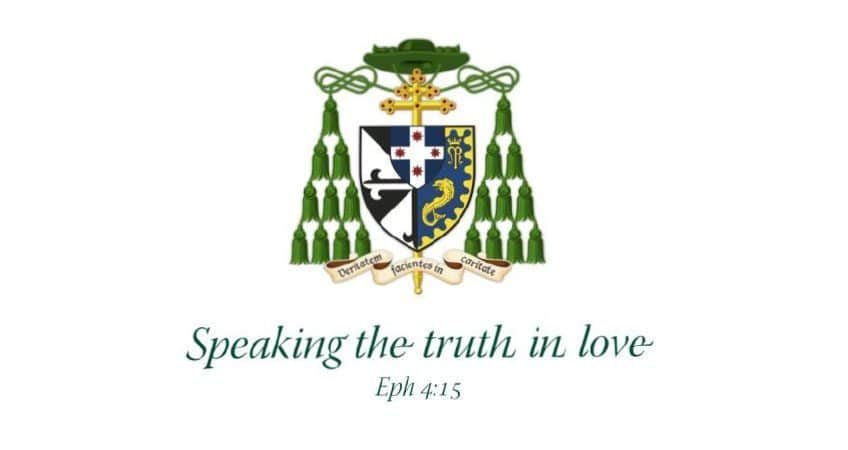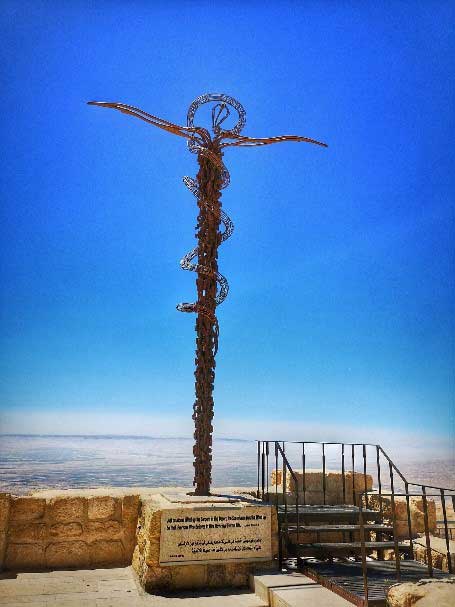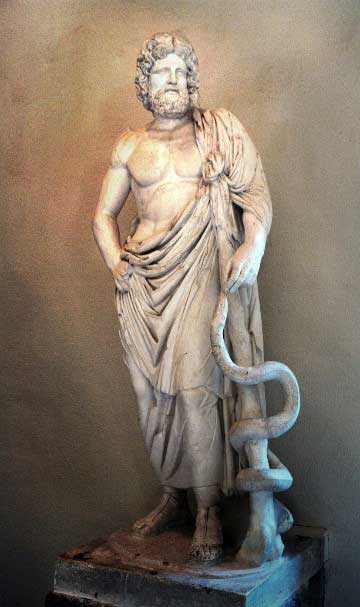Homily for Solemn Mass of the Feast of the Exaltation of the Holy Cross + Annual Visit to Sancta Sophia College

Sancta Sophia College Chapel, Camperdown, 14 September 2022
It was born out of boredom. Birmingham was one of the most heavily bombed cities during World War II and so Anthony Pratt spent a fair share of his time bored in bomb shelters. Inspired by Agatha Christie’s murder-mysteries, as well as the parlour games of his youth, Pratt devised a “who done it” boardgame. Players would compete with one another as pseudo-detectives, piecing together clues, scrutinising each other, trying to identify the culprit. He initially gave the game the rather unimaginative title Murder. But after some redesigning by his wife Elva, Pratt sold the game to the British manufacturer Waddingtons, who released the game in 1949 with the new name: Cluedo. It has since sold more than 150 million copies in over 40 countries and has generated its own spin off feature film, mini-series, books, even a musical!
The secret to Cluedo’s success and longevity, I think, is its appeal to our rationality as human beings. A lot of board games are essentially random and about coping with chance. But this game appeals to our desire to make sense of things, solve problems, understand the erstwhile unknown. Mystery both frustrates and entrances us because we believe the world is essentially intelligible. When something seems inexplicable, our inner detective gets to work, seeking clues, connecting the dots, finding a satisfactory answer so we can put the case to rest and move on.
But that’s only one sense of ‘mystery’: a soluble puzzle at the heart of games like Cluedo, Agatha Christie novels or true crime podcasts. When we speak of mystery in our Christian tradition it’s in a related but different sense. Here we are not describing things to be grasped or ‘solved’ by investigation. Rather, we use mystery to denote the things hidden in God, that are only divulgedin God’s way and God’s good time. So, when we refer of the mystery of the Holy Trinity or of the Incarnation and Redemption, we are speaking of things we’d only ever puzzle out with the help of a God of infinite truth and goodness, help we call ‘faith’.[1]
So, among the differences between secular and sacred mysteries is that the latter are revealed by God more than human investigation and so not so much achieved as received. The deposit of faith unfolded for the People of Israel, definitively disclosed in Jesus Christ, entrusted to the Apostles, and handed on in Scripture and Tradition, is the how and what we learn of the sacred mysteries. And unlike scientific problems or cold cases, we never get to the bottom of them because they are literally bottomless. Their subject-matter is so rich it is inexhaustible and a never-ending source of spiritual nourishment.
This is key to how we approach something like this Feast of the Holy Cross. God’s plan for our salvation was gradually unveiled and realised over thousands of years, coming to fulfilment when “God so loved the world he gave his only Son” (Jn 3:16). By word and sacrament, prayer and action we touch that life, death and resurrection, we ‘enter into’ and experience these mysteries for ourselves. And the Cross that we celebrate tonight is the symbol of this. But the Cross is a paradox. An instrument of torture and execution, designed not only to punish but to humiliate becomes the means for our healing and exaltation.
Today’s feast dates back to the fourth century AD when, after centuries of persecution during which many Christian holy sites and objects were buried, the Peace of Constantine meant Christians were free to uncover these long lost treasures again. The emperor’s own mother, St Helena, made a pilgrimage to Jerusalem and through a spiritual experience was able to identify where the Cross of Christ had been buried, together with the titulus or notice put above Him and the nails that held Him fast. To confirm its authenticity, a woman suffering from a terminal illness was asked to touch it and was immediately healed.[2] Many other healings followed. It is over this site that the Church of the Holy Sepulchre was raised in Jerusalem and, within it we find the Chapel of the Finding of the Cross.[3]
Of course, the cross had been an object of veneration among Christians long before Helena’s find. Early Christians came to understand it as a kind of skeleton key or magnifying glass through which they could make new sense of salvation history both in the Jewish scriptures and their own stories.
In our Old Testament reading the tired and impatient Israelites rebel against God and Moses as they wander through the desert. But under attack by deadly serpents, they return to Moses and beg him to intercede with God. The compassionate God delivers the people from their affliction by having Moses hold up the Nehushtan, a bronze serpent on a standard (Num 21:4-9; cf. 2Kings 18:4). There are clear parallels with the caduceus of Hermes and the rod of Asclepius in Greek mythology that are used to this day as symbols of logistics and medicine.



Moses’ Bronze Serpent (Mt Nebo); Mercury with the Caduceus (Casa dei Vettii, Pompeii); Asclepius with his Rod (Archaeological Museum of Epidaurus)
But this event in the life of Israel takes on a richer meaning when viewed in the light of the Cross. In our Gospel tonight Jesus alludes to His impending Passion when He tells Nicodemus that, like the bronze serpent that Moses lifted up, the Son of Man would be raised up so that all who believe in Him might have eternal life (Jn 3:13-17). The salvation offered to the wandering Israelites through the Nehushtan is now perfected as salvation offered to the entire cosmos through the Cross.
Jesus was executed upon a cross, after the authorities and the crowd bayed for His crucifixion. He had long predicted this would come and invited His disciples to take up their crosses to follow Him. So, the cross would have meaning not only for Him but for us, who like Simon of Cyrene are co-opted to help Him carry the cross. The first Christians spoke unashamedly about their crucified Messiah and had faith in the power of the cross to forgive sin, reconcile enemies, save the lost and raise up in glory. Paul said his only wisdom and only boast was the cross of Christ.[4] And from that first generation onwards Christians have recognised the cross as the centre of history, the symbol of hope at the heart of their religion, the object that best represents God’s mysterious plan for our salvation. The cross is our key to reality and our lens by which to see God’s loving action in all reality: the key by which to unlock all the mysteries and the detective’s scope through which to understand them. May the students of Sancta Sophia know that holy wisdom, for as Paul tells us, “The wisdom of the cross may be foolishness to the doomed, but to those who are being saved is God’s very power.” (1Cor 1:18) Happy Feast Day!
[1] CCC 232-237.
[2] https://www.catholiceducation.org/en/culture/catholic-contributions/st-helena-and-the-true-cross.html
[3] https://aleteia.org/2021/08/25/visit-the-spot-where-st-helena-found-the-true-cross/
[4] Jesus executed upon a cross: Mt 27:33-50; Mk 15:22-39; Lk 23:33-47; Jn 19:17-30; Phil 2:8; Heb 12:2. The authorities and crowd bayed for His crucifixion: Mt 27:23-26; Mk 14:13-15; Lk 23:21-24; Jn 19:15. Jesus predicted his crucifixion: Mt 16:21-23; 17:22-23; 20:17-19; Mk 8:31-33; 9:30-32; 10:32-34; Lk 9:21-22, 43-35; 18:31-33; Jn 3:14; 12:23-24. Jesus invited His disciples to take up their crosses and follow: Mt 10:38; 16:24; Mk 8:34; Lk 9:23; 14:27. Simon of Cyrene co-opted to carry the cross: Mt 27:32; Mk 15:21; Lk 23:26. Early Christians preached Christ crucified: Acts 2:23,36; 4:10; 1Cor 2:8. The power of the cross unknown to ordinary human intelligence (1Cor 1:17-18; Phil 3:18), to forgive sin (Col 2:14; 1Pet 2:24), reconcile enemies (Eph 2:16), save the lost (Gal 5:24) and raise up in glory (2Cor 13:4). Paul’s only wisdom and boast was the cross: 1Cor 2:1-2; Rom 6:6; Gal 5:24; 6:14.
Introduction to Solemn Mass of the Feast of the Exaltation of the Holy Cross + Annual Visit to Sancta Sophia College
Sancta Sophia College Chapel, Camperdown, 14 September 2022
It is a joy to be back here at Sancta Sophia College as the College for the annual Archbishop’s Mass and Visitor’s Dinner. Today is the Feast of the Exaltation of the Holy Cross, a day when we commemorate the object on which hung Our Saviour. By His perfect sacrifice at Calvary, Christ transformed this symbol of humiliation and suffering into one of selfless love, reconciliation and everlasting life. I recognise concelebrating with me tonight Very Rev. Fr Roland Maurer. I salute the College Principal, Fiona Hastings, and her predecessor Sr Mary Shanahan; the Chair of the College Council, Cathleen Crossley, and other members of Council; members of College staff; various Heads and Principals of Schools; and members of the university community. Above all, I welcome the students of Sancta Sophia College!

